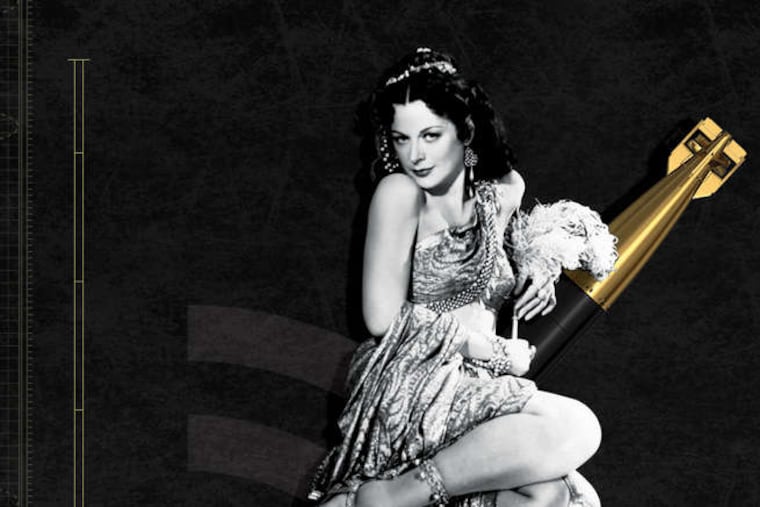One extraordinary package
Beautiful, brainy Hedy Lamarr was both movie star and inventor, a story too unlikely for film.

Hedy's Folly
The Life and Breakthrough Inventions of Hedy Lamarr
By Richard Rhodes
Doubleday. 261 pp. $26.95
In 1938, the flacks at MGM issued a press release dubbing her "the most beautiful woman in the world."
In 1942, the folks at the U.S. Patent Office issued her patent No. 2,292,387, for her invention of a "Secret Communication System."
Hedy Lamarr, glamorous Hollywood star. Hedy Lamarr, glamorous genius inventor.
That's the gist of Richard Rhodes' Hedy's Folly: The Life and Breakthrough Inventions of Hedy Lamarr, although, of course, it's far more complicated than that. And far more fascinating.
There's the presence of George Antheil, the Trenton-born avant-garde composer famous for Ballet Mécanique. He stayed late into many nights with Lamarr, working out the kinks in their pioneering frequency-hopping radio device, which they dreamed up for use in U.S. Navy torpedoes to thwart interception by enemy ships.
The Navy failed to put the spread-spectrum technology to work in World War II, but if you have Bluetooth, or a cordless phone, or WiFi, or a GPS, or scan an item through a bar-code reader, well, you have Lamarr and Antheil to thank.
Indeed, the Austrian actress who scandalized the Continent with her nude scenes in 1933's Ecstasy (she was all of 17 when she made the film), and who became one of Hollywood's highest-paid stars thanks to hits like Algiers, White Cargo, and Samson and Delilah, was a stay-at-home amateur inventor when not busy on the back lot.
As for her heart-stopping allure, Lamarr was quick to criticize those who couldn't see the brains behind the beauty. "Any girl can be glamorous," she once famously opined. "All you have to do is stand still and look stupid."
Antheil was a restless eccentric who, for a time, taught at Philadelphia's Settlement Music School. Then he lit out for Paris to commune with the likes of Igor Stravinsky and Ezra Pound. He became Lamarr's friend and collaborator once they found each other in L.A. - applying his ideas about sonic patterns and digital control (gleaned from his work on old-fashioned player-piano scrolls) to the development of their device.
The Pulitzer Prize-winning Rhodes (for the first volume in his history of nuclear science and weaponry) goes at all this with diligence and curiosity. Yes, his writing can be dry. Here is Rhodes describing Lamarr's brief but impactful 1937 affair with author Erich Maria Remarque: "A key requirement for a successful transformation of personal identity is a mentor or model to guide the novice over the treacherous crevasse that separates the old identity from the new."
It's the same diagrammatic style he applies in describing the military applications of Lemarr and Antheil's invention: "The basic problem of transmitting a frequency-hopping command signal between a ship or an airplane or a torpedo was that of synchronizing the transmitter . . . ."
But such analytical, anti-hyperbolic prose actually serves the book well. How else to tell the extraordinary tale of a brilliant Viennese girl inspired by her mechanically minded father, a teenager seriously bitten by the acting bug, and then desperately trapped in a marriage to an Austrian munitions magnate - a jealous and possessive older man whom Lamarr literally fled in the dead of night?
(It was from her first husband, arms manufacturer Fritz Mandl, that she learned about bombs, rockets, and radio-controlled guidance systems. In the end, the actress was married and divorced six times, and had two children.)
It was the late 1930s, during the rise of the Nazi and Fascist movements. Lamarr, a Jew - although she kept this fact secret until near the end of her life - made her way from Vienna to London to Los Angeles. Louis B. Mayer oversaw the name change (she was born Hedwig Kiesler), gave her English lessons, and had her sign a contract with MGM. And the rest, as they say, is history.
But hers is the kind of personal history that, even if it had been presented as a Golden Age Hollywood thriller, would have seemed way too wild to be true.